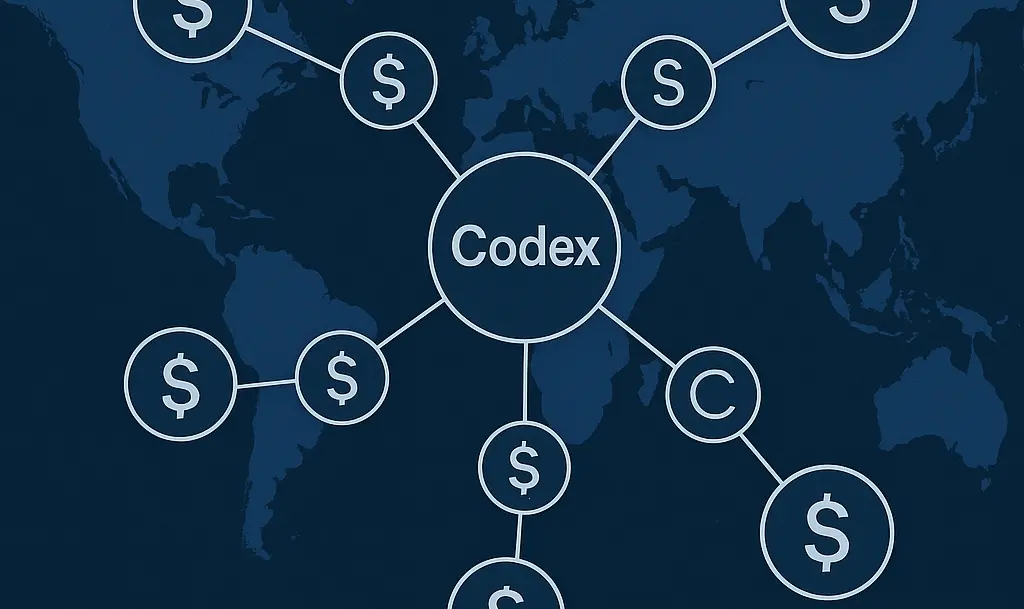Solana Saga Early Experience: Is the $1000 Web3 Phone Worth It?
Original Title: 《Solana Saga Review: The Web3 Smartphone Has Arrived》
Author: Andrew Hayward, Decrypt
Compilation: Baize Research Institute
Solana has indeed realized its plan to manufacture its own Web3 smartphone "Saga"—it is currently open for pre-orders and will be publicly available on May 8.
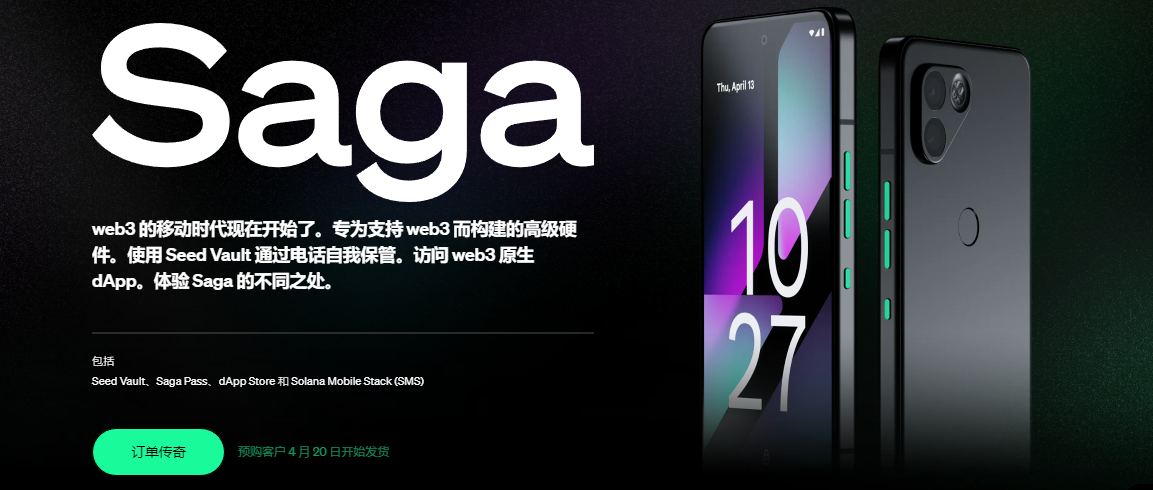
Last year, Solana Labs founder Anatoly Yakovenko referred to the plan to create its own Web3 smartphone as a "moonshot," aiming to be a "developer experiment" that challenges the rental model of Google and Apple app stores, fully integrating a crypto wallet to make user interactions with dApps smoother and lead a new Web3 paradigm.
In the past week, Decrypt has had an early look at this $1,000 Android phone—our impression is that using this phone feels more like a Web2 device integrated with Web3 (albeit meaningfully).
But that doesn't detract from it being a powerful phone, with a native, secure crypto wallet feature, and a compact, intuitive desktop. However, the available dApps are limited, and we encountered some obstacles while interacting with them.
Compared to the daily experience of Web3 enthusiasts, using the Saga now feels more like beta testing something hopeful and promising. For early adopters and enthusiasts, this might be an interesting test, a potential catalyst for developers, but it may be hard for the average consumer to accept—Solana Labs knows this, and they expect Saga's sales won't be high, being satisfied with 25,000 to 50,000 units.
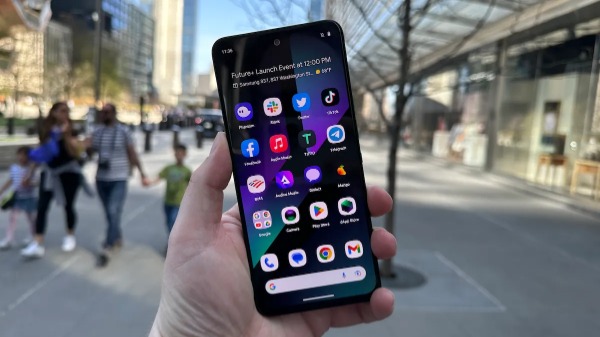
Experience Design and Specifications
As a tech reviewer and someone who always uses high-end phones, one of my main considerations when evaluating a phone's pros and cons is whether I can use it daily. In other words, when I frequently stay connected socially, take photos, and work remotely, am I willing to carry this phone in my pocket?
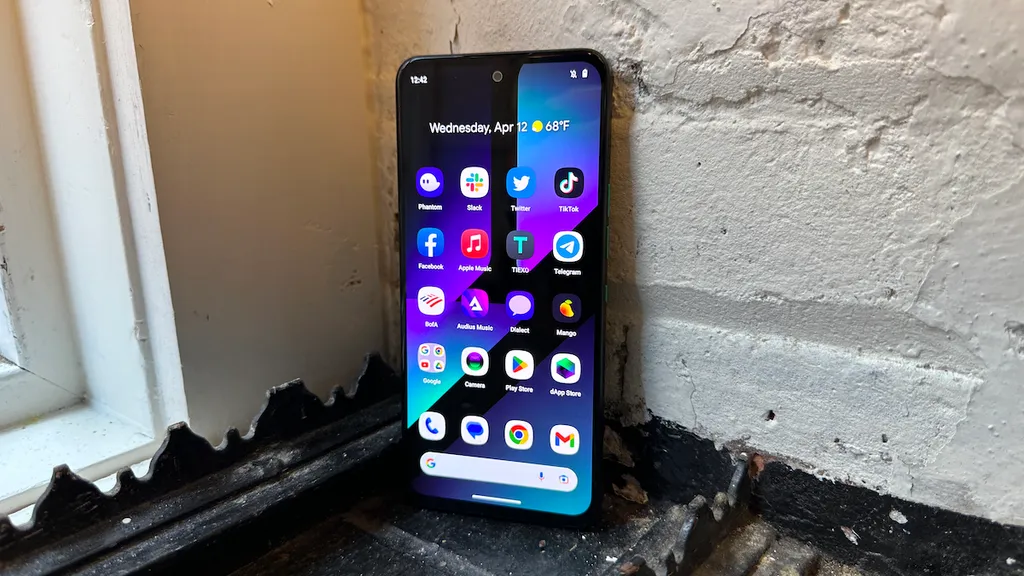
Fortunately, the Solana Saga meets this criterion.
It is a premium Android phone with an appealing (but not overly flashy) design, made from sturdy materials, and equipped with almost everything a user needs for communication, work, and entertainment. Even without the Web3 elements, it is an excellent Android phone.
At first glance, the Saga does not stand out like the Samsung Galaxy S23 or iPhone 14, with almost no distinctive features to help it shine—especially the green side buttons and the triangular titanium camera module on the back.
The stainless steel frame and ceramic back are nice, even if the matte black back is filled with my fingerprints and smudges.
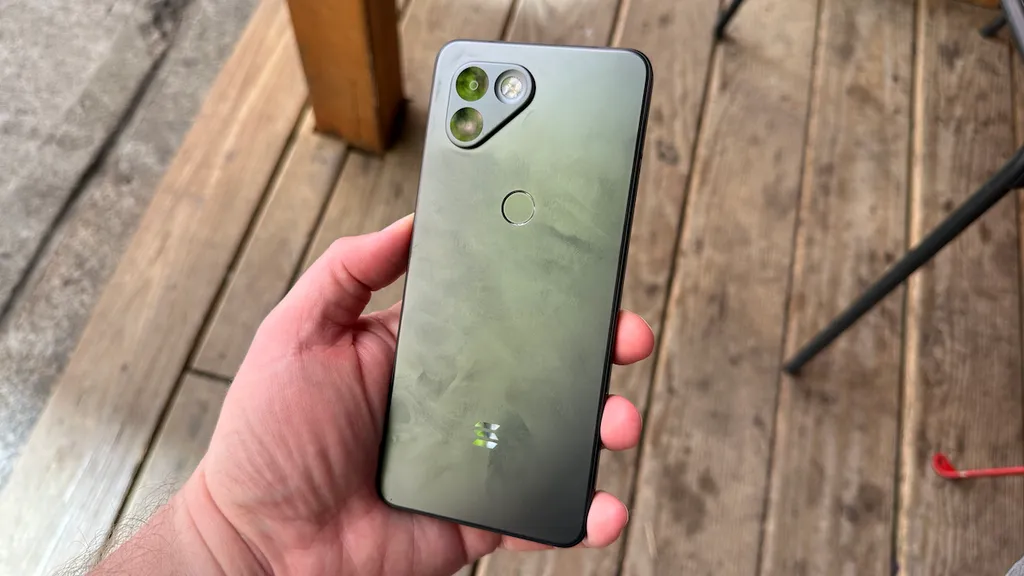
It is also a "Big Boy"—slightly larger and heavier than my iPhone 14 Pro Max, featuring a bright 6.67-inch 1080p AMOLED screen and a smooth 120Hz display. Additionally, it comes with a powerful 4,110mAh battery, providing strong and reliable battery life, and supports convenient wireless charging and faster wired USB-C charging.
In terms of performance, the Saga is also very smooth and powerful, thanks to the flagship Qualcomm Snapdragon 8+ Gen1 processor and 12GB of RAM, allowing it to run games and demanding applications with ease. However, the Gen1 is not the top-tier chip: the Galaxy S23 and other new phones generally come with the Gen2 chip, which significantly boosts performance.
You might not notice the difference now, but as higher-demand applications and games are released, the Saga may struggle compared to some competitors in the future.
On the bright side, the Saga comes standard with 512GB of internal storage—enough to meet most people's needs.
It also features a dual-camera setup, with a 50-megapixel main camera and a 12-megapixel ultra-wide camera, providing clear details and vibrant colors for my casual photography needs. However, compared to the iPhone 14 Pro Max, the iPhone's lenses are clearer and the color balance is more natural.
Aside from the Web3 elements, the Saga also comes with a clean version of Android 13 (without outdated software bloat), as well as the full suite of Google services, including the app store. Therefore, this phone is compatible with all major carriers in the U.S., allowing you to take it anywhere.
Experience Web3 Features: Web3 Anytime, Anywhere
The above is the standard experience of Solana Saga's "Web2" aspects—if you plan to use it as a daily phone, it is adequate.
However, it is the integration of Web3 that sets the Saga apart from typical smartphones, and this is a key reason why some believe the Saga could be the "flagship product" standard for Web3.
In terms of Web3, the Saga is built around Seed Vault, a custodial solution that protects your wallet's seed phrase in a secure environment on the phone. Even switching to another Android phone would not allow access, as Seed Vault is linked to your biometric signature via the fingerprint sensor.
With Seed Vault securely protecting your wallet, the Saga has also developed a dApps app store, which currently has only a handful of dApps but allows for smoother and easier use than traditional smartphones. Using wallets like Phantom or Solflare, you can more easily sign Solana network transactions with just a fingerprint verification and occasional PIN entry.
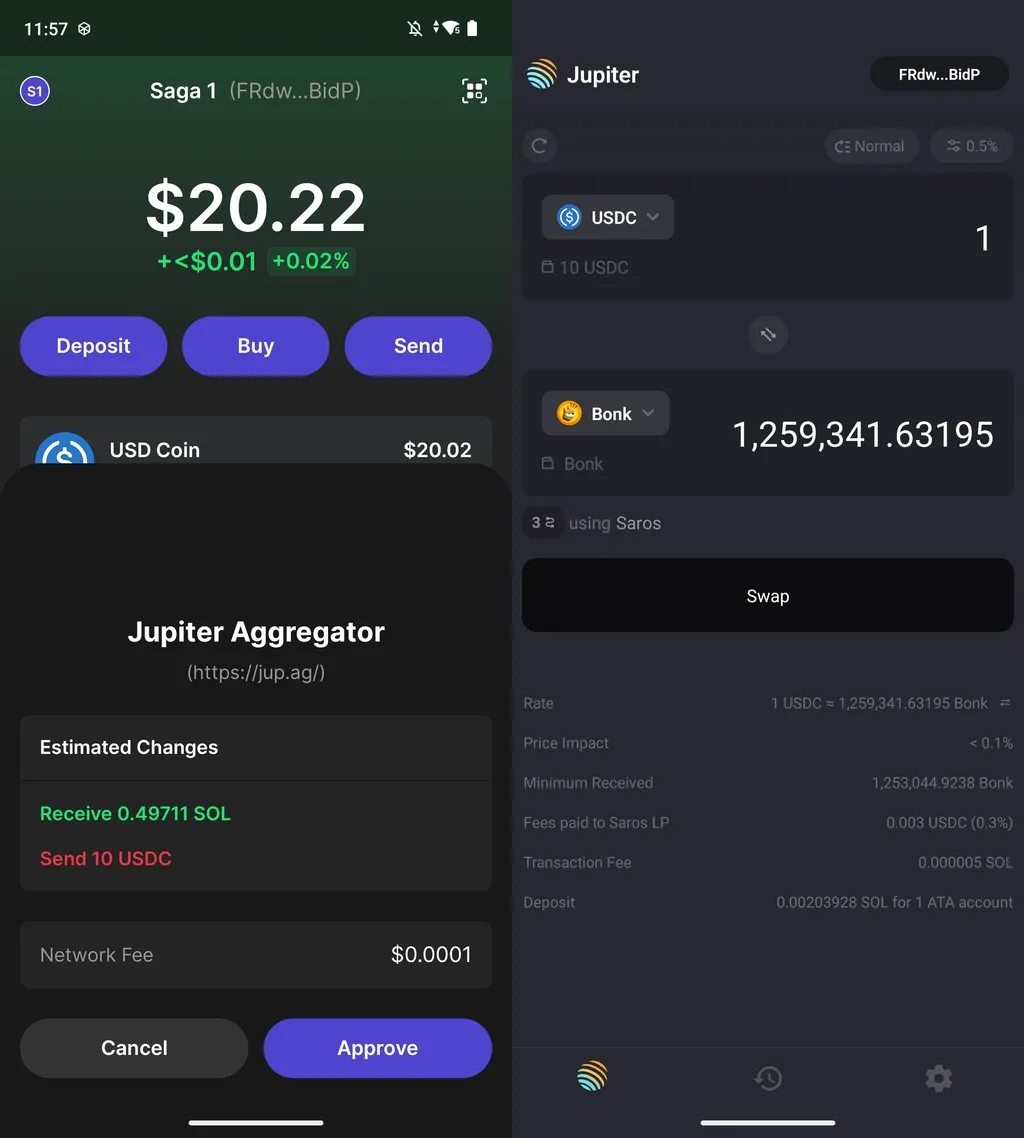
Setting up a wallet on the Saga is relatively simple; within minutes, I exchanged $USDC for $SOL through the trading aggregator Jupiter and claimed the Saga's genesis NFT via the NFT marketplace Tiexo, as well as purchased other NFTs. Additionally, I casually took a photo in Times Square, New York, and turned it into an NFT through the NFT platform Minty Fresh.
(Note: Like the phones received by pre-order customers, our early experience with the Saga also included $20 worth of $USDC and $0.01 SOL—worth about $0.25—for network fees. After the experience, Decrypt will return the phone, all unused funds, and the purchased and minted NFT assets to Solana Labs.)

With Solana's Mobile Wallet Adapter (MWA) technology, the wallet can also connect to web-based Web3 applications. For example, at the time of writing, the native dApp of the NFT marketplace Magic Eden has not yet been listed in the Saga's dApp store, but I connected to Magic Eden's website through the Phantom wallet and purchased an NFT.
However, during the experience, I also encountered some "stumbling blocks."
I was unable to connect the wallet to the native dApp of the decentralized streaming music platform Audius; no matter how many times I clicked the button, the decentralized social application urFeed could not be downloaded from the dApp store for days; and the MWA was not always effective—for instance, when I tried to connect the wallet to the Web3 game Aurory's website… there was no response.
Broadly speaking, while the core of a Web3 phone should be to send, receive, and trade cryptocurrencies, mint and trade NFTs, I really hope for more interesting and engaging Web3 experiences.
For example, the Web3 gaming sector on the Solana network is continuously growing, but the dApp store currently has no playable games. I tried to open Solana-based games on the web, but to no avail—the shooting game Mini Royale: Nations failed to load, and Aurory wouldn't let me connect my wallet.
A representative from Solana Labs stated that "some games" are being developed for the Saga and are "coming soon."
For Web3 Early Adopters
Despite the bugs and obstacles, using cryptocurrency and NFTs for transactions on the Solana Saga is faster and easier. Typically, running dApps and trading cryptocurrencies on a phone can be frustrating, but the user experience of the Saga is undoubtedly a step forward—this point precisely reflects Solana's ambition to launch a "Web3 native phone."
It attempts to cultivate a decentralized mobile ecosystem that does not rely on large tech giants like Apple and Google and their 30% cut from app store sales—which not only affects developers but also hinders the development of Web3 mobile applications.
This is a significant shift, but it also carries substantial risks—if the Saga does not find enough of an audience to support such a mobile dApp ecosystem, it could be costly for Solana Labs and the Saga.
For Web2 giants, perhaps the sales level of a few tens of thousands of units for the Saga won't pose a threat to them, but if it encourages developers to create dApps native to mobile (which it might, as Solana Labs has launched a developer funding program for mobile-native dApps), then it may bring more affordable competitors aimed at the Web3 community—also providing more compelling reasons to buy.
Conclusion
This $1,000 smartphone is certainly not for everyone. However, the Saga does not emphasize Web3 use cases, and among similarly expensive smartphones, it stands out as an excellent product. Nevertheless, its integration with the Solana network and many dApps represents an exciting and promising turning point that could ultimately yield returns for dApps and users.
However, for now, further developments still need to be observed.









